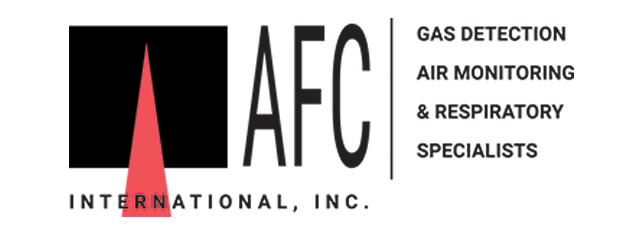Resource Videos and Links
View all of our resource videos and links below

Videos
Sensit Test with 10% LEL Pentane
Discussion about Fit Testing Requirements
N95 or P100? Real World Respiratory Protection Questions
Photo-ionization Detector Cleaning and Calibrating Tip
Bad instrument? Check your demand flow regulator!
A look at Sundstrom Respiratory Protection Products
Carbon Monoxide Sensor Cross Sensative to Hydrogen
Bump Testing Gas Detectors
Using detector tubes for Chemical Identification with PID’s/LEL Detectors
Organizations
Following is a list of organizations and manufacturer sites. We believe these sites to be helpful and informative. Their appearance here should not be construed as an endorsement.
| American Conference of Governmental Industrial Hygienists |
| http://www.acgih.org |
| American Industrial Hygiene Association |
| http://www.aiha.org/ |
| ANSI-American National Standards Institute |
| http://www.ansi.org |
| American Society of Safety Engineers |
| http://www.ASSE.org/ |
| CDC (Centers for Disease Control And Prevention) |
| http://www.cdc.gov |
| Chemical & Biological Defense Information Analysis Center |
| http://www.cbia.apgea.army.ml |
| Code of Federal Regulations |
| http://www.pls.com:8001/his/cfr.htm |
| Department of Homeland Security |
| http://www.dhs.gov |
| Emergency Response & Research Institute |
| http://www.emergency.com |
| EPA-Environmental Protection Agency |
| http://www.epa.gov |
| USDOL Mine Safety And Health Administration |
| http://www.msha.gov |
| National Institutes of Health |
| http://www.nih.gov |
| NIOSH (National Institute For Occupational Safety And Health |
| http://www.cdc.gov/niosh/homepage.html |
| National Safety Council |
| http://www.nsc.org |
| OSHA-Occupational Safety And Health Association |
| http://www.osha.gov/ |
| World Health Organization |
| http://www.who.ch |
| Iso Certification |
| http://www.enlar.com |
General Reference Tables
- Table of Ionization Potentials of Selected Chemicals
- Tables of LEL, TLV, UEL, IDLH of some common toxic and combustible chemicals
- Hot Wire vs Vane Anemometers
- About Light Meters
Air Sampling Applications
Badge Applications
- Comparison Between a Passive Organic Vapor Monitor (OVM) and a Charcoal Tube for Monitoring Benzene, Ethyl Benzene, Toluene and Xylene
- Direct-Read Monitoring System for Carbon Monoxide
- Response Time and Interchangeability Effects on the Tube-Like and the Badge-Like Passive Direct-Read Monitors
- Personal Monitoring in the Workplace
Gas Detection Applications/Tech Notes
- AP-236 – Monitoring Benzene & Choosing an Appropriate Monitor for Personal Protection and Compliance with Exposure Limits
- TN-156 – Correction Factors for Combustible Gas Sensors – Rae Systems
- TN-173 – Operation Guide for Demand Flow Regulators for Calibration Gas
- TN-202 – Procedure for ppb Level VOC Detection with the Rae Systems MultiRae Gas Detector
- Five Good Reasons to use a Photo Ionization Detector for Arson Investigations
- Low Cost, Self Checking Carbon Monoxide Gas Detection System for Industrial Plants and Warehouses that Use Internal Combustion Forklift Trucks for Loading and Unloading Delivery Trucks
- Statement on Verification of Calibration for Direct Reading Portable Gas Monitors Used in Confined Spaces by the Industrial Safety Equipment Association
- AP-202 – The ABC’s of Gases in the Industry
- Leak Detection 101
- Carbon Monoxide Investigation: A Primer
- TN-106 – What is a Photo Ionization Detector?
- AP-203 – PIDs as a Hazmat Response Tool
- AP-206 – Guide to Atmosphere Testing in a Confined Space
- AP-207 – PIDs as an Arson Investigation Tool
- AP-211 – PIDs for Continuous Monitoring of VOCs
- TN-106 – Correction Factors, Ionization Potentials and Calibration Characteristics of Rae PIDs
- TN-118 – Rae PIDs for Soil Headspace Measurements
- TN-142 – MiniRae 2000 & MultiRae Pre-Programmed Compound Library
- AP-000 – PID Training Outline
- TN-186 – MiniRae 3000 and ppbRae 3000 Pre-programmed Compound Libraries
- TN-183 – ProRae Remote Host Controller: Communication Troubleshooting Guide
- AP-216 – Using PIDs in Terrorist Chemical Attacks
- AP-220 – PIDs in Clandestine Drug Lab Investigations
- AP-221 – Using PIDs for Assessment of Exposure Risk in Unknown Environments
- AP-212 – PIDs for Indoor Air Quality Surveys
- AP-217 – Confined Spaces and the Construction Industry
- AP-222 – Carbon Monoxide & Natural Gas Detection for fire Department Engine Companies
- AP-214 – Environmental Applications for PIDs
- AP-228 – Facility and Venue Protection
- TN-159 – Nerve Agent Measurement by PIDs
- TN-174 – Decontamination Procedures for Monitors Exposed to Chemical Warfare Agents
- AP-216 – Using PIDs in Terrorist Chemical Attacks
- TN-176 – Basics of Nuclear Radiation
- AP-232 – Radioisotopes in Everyday Life
- TN-182 – Basics of Wireless Security
- First Response Guide for Carbon Monoxide Safety
- AP-222 – Carbon Monoxide & Natural Gas Detection for Fire Departments
- Indoor Air Quality Concerns
Heat Stress Applications
- Tips for Better WBGT Readings
- Heat Stress Monitor Determination & Mitigation
- WBGT Indoor Versus WBGT Outdoor Application
- How Hot Is It?
